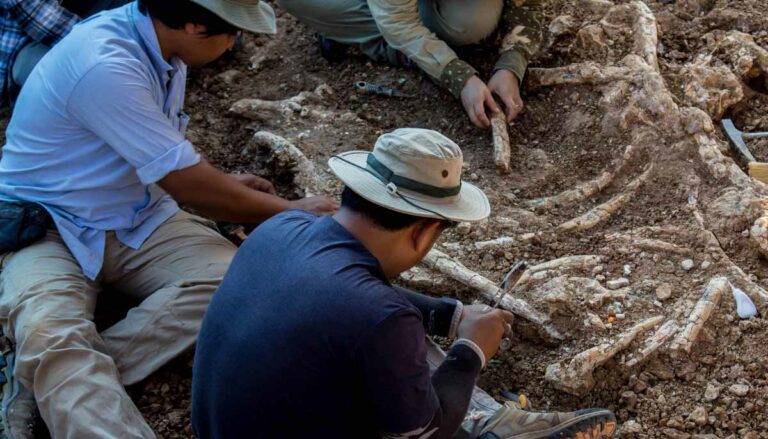An astonishing find near Rome has uncovered remains of Neanderthals from a cave in Italy. Archeologists working in an ancient cave site uncovered fossilized remains of one of humanity’s closest relatives, including some that could be as much as 100,000 years old.
While it’s not new for anthropologists to find Neanderthal remains near Rome, the age of these remains is notable. The Guattari Cave in San Felice Circeo, where these remains were recovered, is one of the most notable places in the history of the study of Neanderthals. In 1939, a Neanderthal skull was recovered from the same cave.
The research is critical to an understanding of the early history of humanity, too. According to some researchers, Neanderthal DNA could still make up a small portion of modern-day human genetics. As such, deeper research into early humanity necessitates more finds like this one.
Neanderthal
Around 40,000 years ago, Neanderthals went extinct. This was likely due to a combination of factors, including climate change and disease. However, some anthropologists also believe that the species may have been somewhat subsumed by modern human genetics, cross-breeding into the species in a way that has preserved Neanderthal DNA into the modern-day.
Indeed, genetic sequencing suggests that some Neanderthal genetics are still present in humans to this very day.
The first Neanderthal remains were discovered in 1856, in the Neander Valley in Germany, lending the species its name. At the time, arguments over the nature of this proto-human gave rise to the “caveman” trope that is still common in popular culture. The image of the knuckle-dragging, pelt-clad cave-dweller is directly based on early assumptions about the intelligence and behavior of Neanderthals.
Modern Research
Modern research, however, suggests that Neanderthals were likely not unintelligent brutes. After all, they succeeded at surviving on Earth alongside their closes cousins for thousands of years. Such success would necessitate some degree of intelligence, likely using tools and language in a way that would be recognizable to modern humans.
Another race archaic proto-human, Denisovans, were more closely related to Neanderthal than our modern-day variant. In fact, some research suggests that Neanderthals and Denisovans likely interbred, too, though Denisovans died out thousands of years before modern man would build the first cities.
So, discoveries like the recent Guattari Cave remains could be the key to understanding the early origins of humanity. While 100,000-year-old bones might sound boring to some people, discoveries like these are among the most critical to unlocking the secrets of the past.





